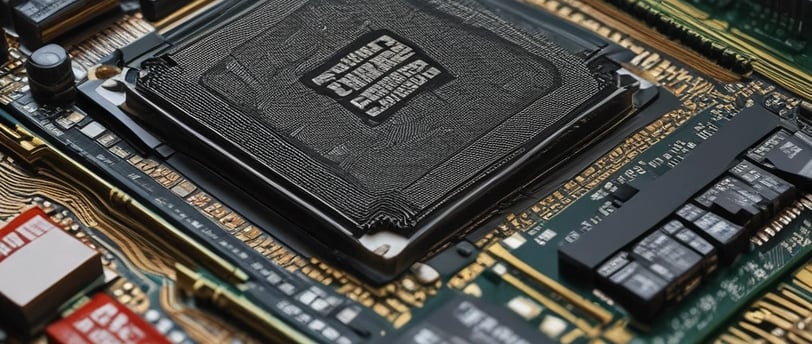TSMC Cuts Ties with Singapore Firm Over Chip Found in Huawei Processor: An Analysis
1/10/20252 min read


Introduction
The semiconductor industry is experiencing unprecedented shifts, and a recent development highlights the complexities of international collaborations. Taiwan Semiconductor Manufacturing Company (TSMC) has reportedly severed ties with a Singapore-based firm, as sources indicate that a chip linked to Huawei processors was at the center of this decision. This blog post delves into the implications of this move and what it means for the industry.
The Background of the TSMC-Huawei Relationship
TSMC, as one of the leading semiconductor manufacturers globally, has long been associated with producing chips for various tech giants, including Huawei. Huawei's extensive product lineup, primarily in telecommunications and consumer electronics, has created a hefty demand for cutting-edge chips. However, geopolitical tensions and trade restrictions, particularly between the United States and China, have placed additional scrutiny on partnerships within the semiconductor supply chain. TSMC's recent decision to cut ties reflects a strategic reaction to these pressures.
Implications of the Severed Partnership
The termination of TSMC's relationship with the Singapore firm has several far-reaching implications. Firstly, this move indicates a noticeable shift in how semiconductor manufacturers are navigating the challenging landscape of global trade regulations. Collaboration with firms involved in contentious geopolitical scenarios may present risks that companies are unwilling to take. Moreover, by distancing itself from entities that could be potentially linked to Huawei’s controversial status in the U.S., TSMC is attempting to safeguard its reputation and operational integrity.
Future Prospects for TSMC and the Semiconductor Industry
The severing of ties does not only reflect a reactive measure but also points towards a proactive strategy from TSMC to adapt to an evolving market. With increasing demand for innovative chips, TSMC aims to focus on alliances that align with its long-term vision, ensuring compliance with international regulations. As the semiconductor industry pivots towards greater self-reliance and localization of supply chains, it is expected that many firms will reevaluate their partnerships to mitigate risk while capitalizing on growth opportunities.
In conclusion, TSMC’s decision to cut ties with the Singapore firm signifies more than just a single partnership dissolution; it is emblematic of broader trends within the semiconductor industry. A growing emphasis on compliance, strategic partnerships, and managing the impacts of geopolitical relations is shaping the future. As the landscape continues to evolve, TSMC's actions may ultimately set a precedent for how semiconductor firms approach collaborations in this challenging era.
